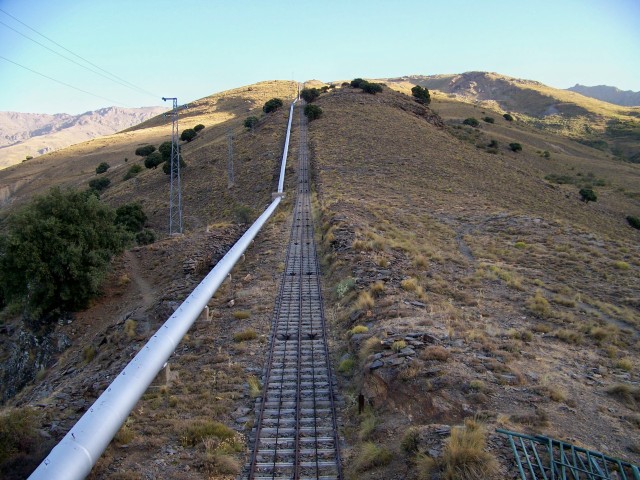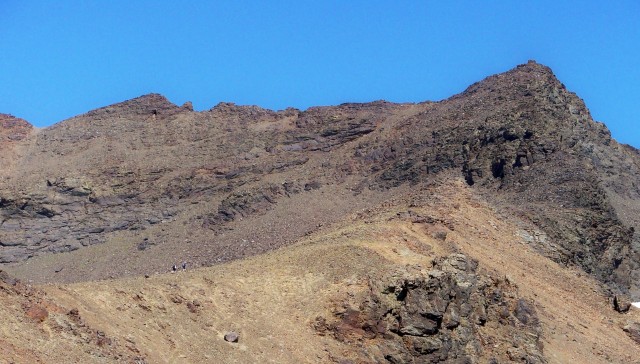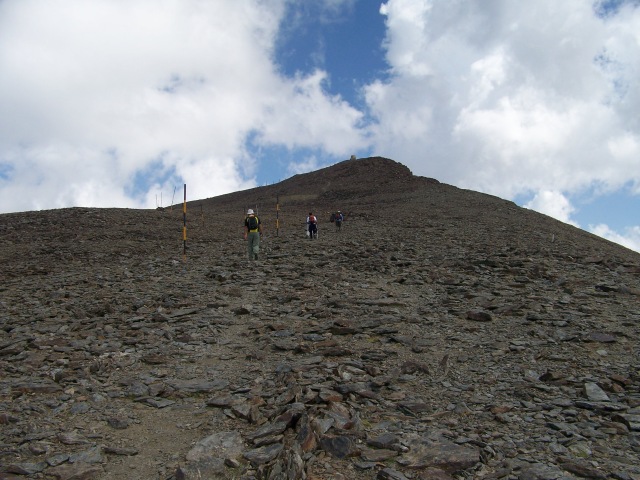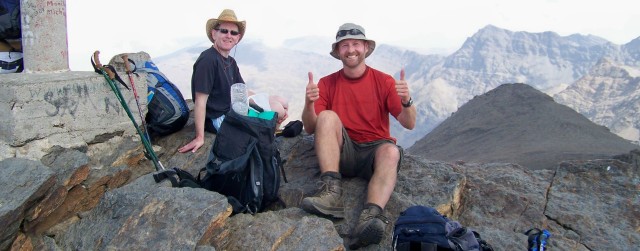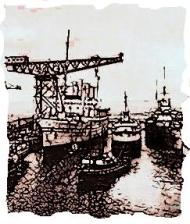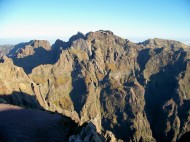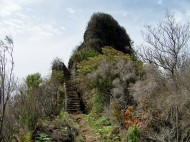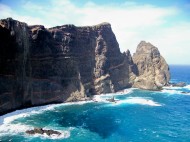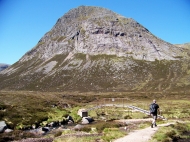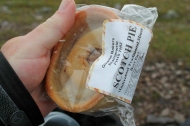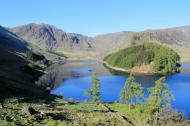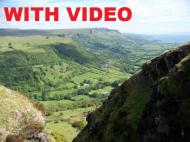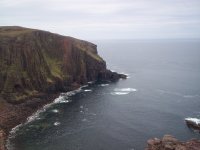AN Englishman, two Irishmen and a load of Spaniards climb a mountain. The Englishman says: “Because I am English, and therefore considered by some to be superior, I shall climb this mountain by the hardest route possible, taking with me an inadequate map and very little gear to cope with the terrain. And at the end of the day I shall walk all the way down again.”
The Irishmen say: “Because we are Irish, and therefore have the edge on the Englishman, we shall climb this mountain by the hardest route possible, taking with us a GPS navigation system to cope with the terrain. And at the end of the day, having had the foresight to book beds in a refugio, we shall sleep in comfort having dispensed with the need to walk all the way down again.”
The Spaniards say: “Because we are Spaniards and we know what we’re talking about, we shall drive our cars to just below the summit and stroll to the top by the easiest route possible. And at the end of the day we shall drive down again and spend the night dancing. Olé.”
At the end of the day the Englishman says: “I am a quivering wreck and totally dehydrated.” The Irishmen say: “We are quivering wrecks, but at least we’re not as quivering as the Englishman.” And the Spaniards say: “Tea break over lads, back on yer heads.” (Oops, sorry, wrong punch line . . . )
VELETA is the third-highest mountain in Spain. Actually, I’m supposed to say mainland Spain, because in the Atlantic there lurks a beast of a volcano that towers above the 11,135ft (3,394 metres) Veleta and its higher neighbour, Mulhacen. To ignore this outsider would be akin to leaving Manx kippers and Jersey Royals off a list of traditional British food. So, just for the record, the highest mountain in the domain of Spain is Teide (3,715 metres) on Tenerife, followed by Mulhacen (3,478) in the Sierra Nevada, Aneto (3,404), the highest mountain in the Pyrenees, and Veleta.
In the darkness of early morning I drive through the awakening town of Orgiva and the mountain villages of Pampaneira, Bubion and Capiliera, then along a three-mile dirt track to a hydro-electric station tucked in the throat of a deep valley at La Cabadilla. As I pull on my boots, at 7.50am, the sky begins to lighten and the chill air of a Spanish mountain dawn begins to warm.
Two walkers trudge past me as I tie my laces. They look northern European. “Hola,” they say uncertainly, reinforcing my suspicion. “Hola,” I say back, with the confidence of a local hombre.
Being my most reticent self, I allow them to progress some distance before setting out from the car. But climbing a zigzag path that follows the hydro station’s water supply pipe and interesting inclined railway that ascends at a breathtaking angle, I bump into them at a fork in the path.
“Hola. Do you speak English?” the smaller one in straw Stetson and sunglasses says.
And so it happens that the Englishman and two Irishmen set out to climb a mountain by the hardest route possible. The Irishmen are Connor, from Cork, and the lanky, ginger-bearded Barry, originally from Donegal. The boys are discussing which path to take. The main branch, which looks substantial and well-trodden, ascends a gentle slope. But to the left another branch shoots up the steep mountainside through scree and scrub to follow the water pipeline. Connor decides this is the best route.
“Where are you heading?” He says.
“Veleta,” says I.
“Ditto,” he says. “Are you going over Loma Pau?”
“Yes,” I say. Actually, I am not certain about this, but having glanced at the map last night, I have reached the conclusion there is only one feasible route from La Cabadilla. And that’s not very feasible either.
“Ditto,” he says again.
We agree that the steep, poorly-trodden and barely visible path is the best option. Ten minutes later we arrive at a footbridge over the pipeline where the main path rejoins our goat track. So that’s one decision that turns out favourably.
I have little recollection of what follows. To sum up, I spend the next five hours struggling up a mountain ridge under the blazing Spanish sun. Connor and Barry are always far ahead of me and eventually disappear from view as I take one of many breaks to catch my breath. My heart rate is about 140 beats a minute – even while resting – I am sweating cobs, my feet feel like lead ballast blocks from the bilge of a submarine, and I have to gulp air occasionally. My problems can be summed up in one word – altitude. I am not used to it. I am not acclimatised. I am a creature who inhabits a world that exists, quite comfortably, between sea level and 4,000ft. Beneath this Iberian sun, I am ascending steeply through rough terrain at an altitude of between 7,000ft and 10,000ft. My body is being tortured and is unable to adjust.
At the four-hour point I hit Pico del Sabiner on the crest of the Loma Pau ridge and get my first clear view of Veleta. Jesus. There are big black mountains all around and not a blade of grass in sight. Veleta’s slopes plunge to a deep valley on my right, from which rises Mulhacen, the highest mountain in Spain – that’s mainland Spain – a great, dark, menacing brute of a thing. The two are linked by a spiky arête of crumbling black rock.
I trudge on over Pico del Sabiner until I reach Puntal de Loma Pau, which provides a number of complications. The Puntal is a steeply-rising heap of broken rock a couple of hundred feet high that effectively blocks the route to Veleta. My guidebook says the merry traveller should skirt to the left of this outcrop and ascend a steep scree slope to arrive on Carihuala and the track to Veleta. Barry and Connor haven’t seen the scree slope, or are ignoring it, and clamber up the broken crags to the top of the Puntal. Bugger that for a game of toy bullfighters. I skirt round underneath and find the technically easy though strenuous route to the crest of the Sierra Nevada ridge.
And this is where the Englishman and two Irishmen meet the load of Spaniards. On the ridge there are people everywhere. Christ. They’ve all trudged up the easy slope from the Pradollano ski station on the Granada side of the range, along a road Franco built during the 1960s. These people are dressed in the latest, smartest, Sunday walking gear – their children too – and I’m wearing filthy clothes that could run a marathon by themselves with the sweat and nutrients I’ve pumped into them.
On the summit of Veleta, five hours and 45 minutes after setting out, I chat with the Irish lads as we eat our bait and take pictures. The views are truly inspiring. When observed from the valley, these mountains convey the impression that – although they form the highest range in Europe outside the Alps – they are heaps of scrubby rubble. Viewed from below, it is not easy to gauge their vastness. Only when you have climbed upon them do you appreciate their immense size and grandeur.
So I stand on the summit of Veleta and gaze down upon an arête of black rock that runs to Mulhacen like a monstrous umbilical cord. What a magnificent place this is. Mulhacen looms above a wall of cloud that presses against its northern buttress. There is a very definite feel of thunder in the air. The summit of Veleta is not the best place to be caught in an electric storm, so I say my goodbyes to the Irish lads – who are heading for Refugio Poquiera – and make my way in a stumbling fashion down the ridge to La Cabadilla.
I will not go into detail about the descent of Veleta. Suffice to say it is vastly longer than I anticipated. Just goes to show that when you are hell bent on getting up a mountain you don’t take into account how much effort goes into getting down.
And if I’m going to finish on a note, I’ll finish on this. I think, rather, I underestimated Veleta and the Sierra Nevada. I underestimated their height, the distance, the heat and the oxygen levels. The vertical ascent from La Cabadilla to the summit of Valeta is 1,745 metres – that’s 5,725ft in the blazing sun, plus several ups and downs on the Loma Pau ridge. Veleta has tested the limits of my energy and endurance.
Christ, I’ve got Mulhacen to climb yet – all 11,423ft of it. Another day, perhaps. And definitely by the easy route.
NEW: There’s a video to go with this article.



